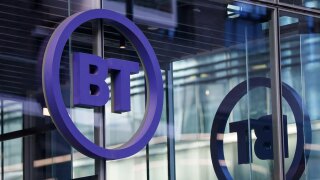2023 was a tough year for mobile networks, as 5G deployments slowed outside of India and China and operators were working through existing inventory.
A 15% drop in sales in Ericsson's mobile networks business vs 2022 was offset somewhat by an 11% growth in its enterprise business. As such, sales growth adjusted for comparable units and currency fell by 10% across the group year on year.
Q4 performance was even worse, with a 17% decline in Q4 2023 vs the same period the year prior, and a 23% dip in mobile networks vs Q3 2024.
Alongside its full year and Q4 earnings report, Ericsson announced that Sandström will replace Carl Mellander, on April 1 this year.
Sandström joins from Getinge - a listed Medtech company.
His full job title is chief financial officer, senior vice president, and head of group function finance.
“I warmly welcome Lars Sandström to Ericsson. Lars’ impressive track record, extensive experience and knowledge in a variety of financial and management roles will be immensely important as we execute on our strategy to extend our leadership in mobile networks, expand into the enterprise segment and drive our culture transformation,” CEO Börje Ekholm said.
2023 in review
Sandström will have his work cut out for him as Ekholm admitted that while Ericsson’s endeavors to boost its profitability in the face of falling network sales were paying off, the company is “not satisfied with (its) profitability and there is more work to do”.
“As we look to 2024, we expect the market outside China to further decline, with similar uncertainties as experienced in 2023,” Ekholm said.
Ericsson are focusing on reducing costs, operational efficiency, growing its enterprise business, and technology leadership in mobile networks.
The company said its technology leadership is enabling its customers to build high-performance, programmable and open networks to deliver superior customer experience, maximise return on investment (ROI) and accelerate business innovation.
“With our leading technology, customers can reduce their total cost of ownership, reduce non-strategic spend and instead redirect a larger portion of capex to revenue-generating network infrastructure, enabling an accelerated network modernisation,” it said in a statement.
Its enterprise business is aimed at creating new monetisation opportunities for its customers, unlocking new revenue streams for operators by enabling them to offer network APIs to developers and enterprises that in turn enable new applications that leverage network capabilities.
Enterprise sales grew by 7% organically YoY mainly driven by enterprise wireless solutions.
Ericsson attributed the performance of its networks business to customers continuing to focus on cashflow.
North American recovery materialises
Sales in India had been propping up the business for the majority of the year, but declined vs Q3 2023 as the market started its transition to “normalised” investment levels following an "unprecedented roll-out pace".
In its Q2 2023 results, Ericsson revealed growth fell by 37% year-over-year in North America, but rose 74% in India, Southeast Asia and Oceania, mainly driven by network equipment sales doubling in India.
Speaking to analysts six months ago, Ekholm and Mellander were keen to emphasise that following conversations with customers, they were confident the US market would see a gradual recovery in late 2023 and improve in 2024.
In its latest results, North American sales were up 6% against Q3 whereas South East Asia, Oceania and India fell 20% for the quarter.
Ericsson are confident its prospects in North America continue to brighten heading into 2024. Late last year it announced a record breaking $14 billion deal with AT&T for Open RAN deployment.
That contract will start to ramp up in the second half of 2024, boosting sales. It also said current investment levels are unsustainably low for many operators, which leads it to be confident that a market recovery should materialise.
The pace and timing of that recovery though is ultimately in the hands of its customers, Ericsson said.






